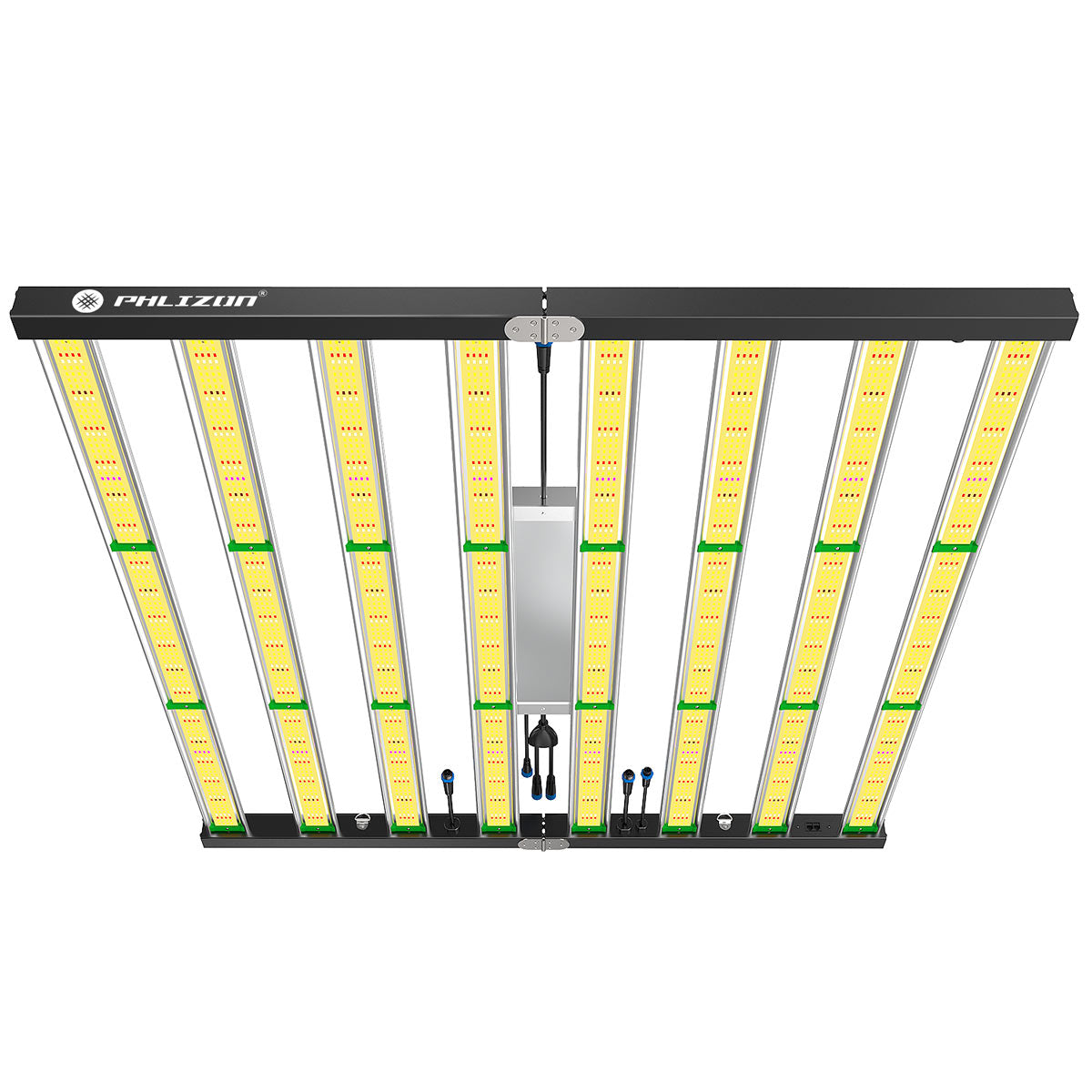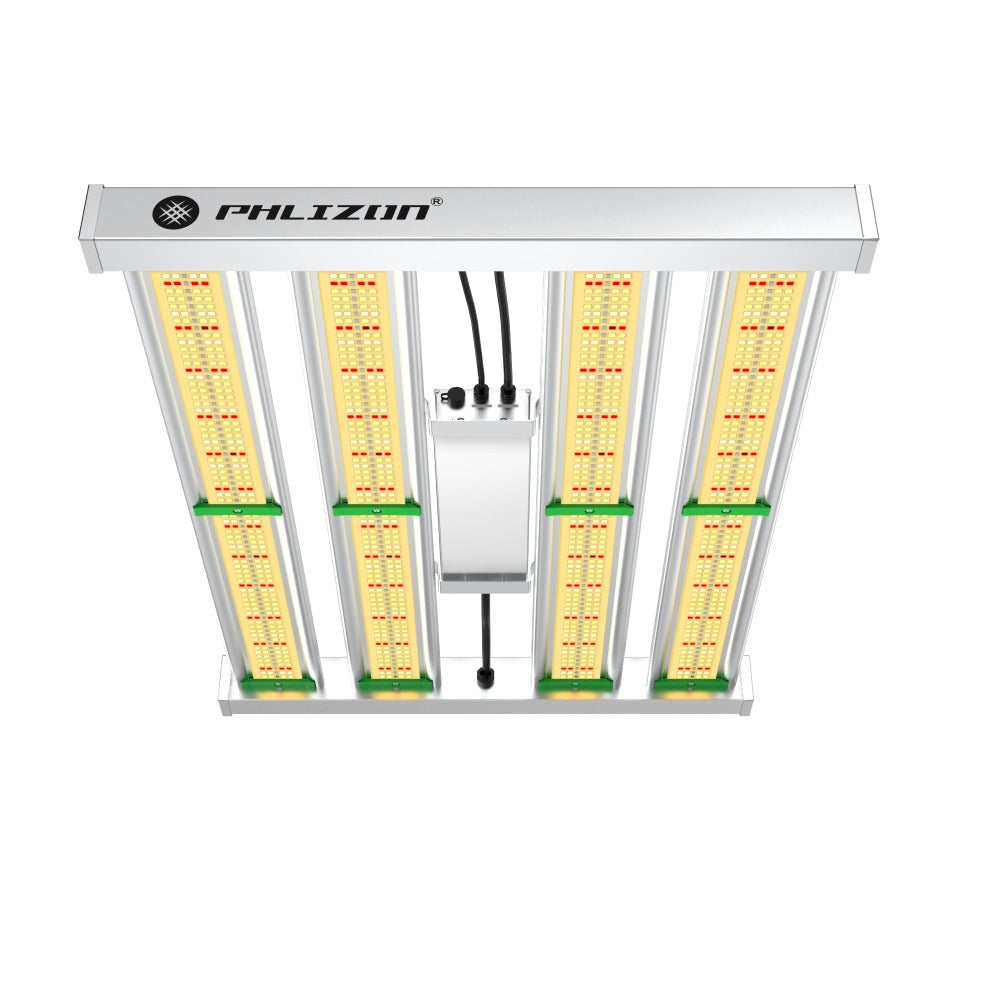Menu
Can You Leave LED Grow Lights on Throughout the Night?
LED grow light, as the name suggests, is used to grow plants indoors. Plants use the LED grow light to keep photosynthesis going even when there is not a beam of light. But can you leave LED grow lights on all night? Is it expensive? Will it burn the plants?
Yes! You can turn them off after 12-18 hours; otherwise, it will burn the leaves. However, some plant types may survive 24 hours of LED growth light.
You should be careful when leaving LED grow lights on all night. In this article, we will be unveiling the effects and considerations needed to keep LED grow lights on throughout the night without hurting the plant. Continue reading and find out more.
What is an LED Grow Light?
Before we dive into deeper details of LED lights and keeping them on throughout the night, let us explore what LED grow lights actually are.
LED grow lights are energy-efficient lights that mimic the sun for plants to keep photosynthesis going to help grow indoor plants. In addition to this, you can fulfill the light spectrum needs of certain plants as these full-spectrum LED grow light emits a unique spectrum of light, including colors like red, green, and blue.
These full-spectrum LED grow lights help in every growth phase of the plant and reduce heat waste as well.
Benefits of LED Grow Light
The LED grow light full spectrum has taken over the traditional greenhouse lights with several benefits. Here are some of the benefits that the LED grow light full spectrum and a glimpse into LED vs. HPS:
- Efficient Energy Consumption: These greenhouse lights are substantially energy efficient because they need less electricity supply to help plants grow compared to the traditional ones. As a result, you consume less electricity and get lower electricity bills, making indoor cultivation cost-effective.
- Durability: LED grow lights are reliable and durable at the same time. They last for several years, cutting off the costs and making it convenient for indoor cultivators. On the other hand, the rest of the traditional greenhouse lights might not last as long as the full spectrum LED grow lights.
- Customizable LED light spectrum:You can customize your LED grow lights to create a tailored LED light spectrum. It is beneficial because different growth stages of plants need different light spectra. Hence, you can alter the LED grow light's full spectrum based on the need for a seedling, a flowering plant, or a vegetative growth.
- Lower Thermal Waste: LED grow lights emit relatively lower heat than traditional greenhouse lights. This lower emission of light mitigates the risks of overheating and plant damage. This implies you can put the LED grow lights closer to the plants without fretting about plant damage, leading to enhanced light absorption by plants.
- Enhanced Crop Yield and Plant Growth: According to scientific observations, plants that are grown under LED grow lights exhibit better-enhanced growth rates, increased yield, and even healthier growth. This is possible because LED grow lights offer consistent and optimum light conditions based on the growth period of the plant. On the other hand, the traditional greenhouse lights are incapable of doing this.
- Reduced Cooling Requirement: LED grow lights emit less heat compared to traditional greenhouse lights, which reduces the cooling requirement for the growth chamber. When there is no need to cool the growing area, you are using less electricity, making LED grow lights cost-effective. Thus, LED grows lights are better than High Pressure Sodium grow lights.
All in all, LED grow lights are the best choice for your indoor plants. You can get your hand on one of these, too. FD8000 1000w Led Grow Light is one of the best LED grow light strips. It comes with 5x5 flower coverage and 6x6 veg coverage. This dimmable LED grow light promises quality in an affordable range.
Plant Growth and Light Requirements
Plants need light to produce food for themselves and to grow using the carbon dioxide from the air and water from the soil. For those who don’t know, the green parts of the plant contain chlorophyll, which is a pigment that absorbs light energy. Chlorophyll then transforms carbon dioxide and water to produce glucose, which serves as the sole source of growth and development for plants.
However, all plants need light energy to convert it into their food source, but the intensity of light exposure can vary from plant to plant. Here are the categories of plants with different light needs.
1. Low-Light Plants
Needless to say, low-light plants can survive minimum light and are usually found in dense forests. For example, ferns and some philodendrons are low-light plants that will survive even in areas away from direct sunlight. Hence, you would need to install only a few LED grow lights for such plants.
2. Medium Light Plants
Like the name suggests, these plants need medium bright light for their proper growth and health. However, they can survive under an indirect light source. For example, the African violets and peace lilies are medium-light plants that can survive even when put away from LED lights.
3. High-Light Plants
These plants need a number of hours under direct sunlight or, in some cases, LED grow lights. For instance, succulents and vegetables are high-light plants that need direct sunlight for several hours in a single day for their healthy growth and to avoid any damage.
Significance of Photoperiod
You should know that little light can cause weak or leggy growth, while too much light can lead to bleaching of the leaves and fragile organs of the plant. Hence, as an indoor gardener, you must keep a balance of dark and light cycles.
The light and dark cycle, or the photoperiod, protects plants from potential damage and plant disorders, which is why it is considered crucial for plant health. With this balance in the light and dark cycle, you can maintain biological processes like the flowering cycle, growth patterns, and leaf movement.
Based on the photoperiod, plants are classified into different categories. The ones that require long patches of dark time to trigger their flowering cycle are termed short-day plants. These include poinsettias and chrysanthemums. On the other hand, those that need long periods of light are termed long-day plants. For example, lettuce and grains are long-day plants.
In addition to this, there are plants that can grow regardless of light periods, for example, corn and tomatoes. However, for those plants that need a certain period of light and dark, disrupted light and dark cycles can hinder the growth and development of the plant. That is why you should ensure optimal light patterns to ensure their growth.
Impacts of Over-Exposure
Leaving LED grow lights on all night can cost you much as they cause disrupted circadian rhythms, leading to imbalanced photosynthesis and respiration. This imbalance can cause reduced energy reserves, and prolonged exposure to LED grow light can end up causing stress to the plant.
|
Pros |
Cons |
|
The growth period of long-day plants can be accelerated. |
Disrupted light and dark cycles can affect the health of certain plants. |
|
Some herbs and vegetables require extended exposure to light, which is fulfilled through LED grow lights. |
Prolonged light exposure can lead to leaf bleaching, burns, and even stunted growth, |
|
It ensures a constant supply of light. |
It increases energy consumption and increases costs. |
|
|
It can lead to stress on plants, leading to reduced flowering, poor health, and leaf drop. |
Plant stress can cause havoc to the health of plants you care for, like your kids. Excessive LED grow light can turn your leaves yellow and lead to leaf burns or leaf bleaching. Yes, thats a fact that plants cannot grow without light, but its excess can lead to stunted growth and abnormal flowering patterns of the plants.
Energy Consumption and Cost Implications
UV grow lights are highly energy efficient, more than the traditional high-pressure sodium lights, which use more electricity to convert it into light energy. Furthermore, UV LED grow light' full spectrum comes with long-lasting sustainability compared to the traditional greenhouse lights.
This straightforwardly suggests that LED grow lights are cost-effective than traditional lights because they require seldom changes. However, if you leave UV grow lights on all night, it increases energy consumption and can lead to costly bills.
Monitor Plant’s Response
You can monitor your plant's growth and response to the LED grow light exposure. For instance, look for signs of distress every now and then. You can check if your leaves are turning yellow or if there is an elongated stem or a leaf burn on the plant. All these symptoms are an indication that you must minimize the LED grow light exposure to the plants.
To keep a check on the light hours, you can install a timer or a smart grow light that comes with an app. You can use these apps remotely to turn on and off the LED grow lights and to adjust the light intensity and light spectrum.
Conclusion
All in all, LED grow lights foster robust growth and higher yields by adjusting the light spectrum according to the needs of the plants. However, you should avoid keeping the LED grow lights on all night because it can lead to yellowish leaves wilting and even burning of the leaves. Hence, you should make informed decisions while exposing your particular plant to LED grow light.
Featured blog
- Choosing a selection results in a full page refresh.

















